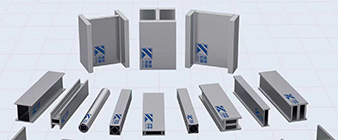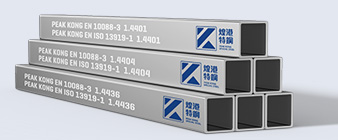When comparing the properties of 2304 (UNS S32304) and 1.4362 (EN 1.4362) stainless steel, there are several key differences to consider:
Corrosion resistance:
2304 stainless steel has a higher chromium content (21-23%) compared to 1.4362 (18-20%), providing better resistance to general corrosion, pitting and crevice corrosion.
The higher molybdenum content (0.1-0.6%) in 2304 also enhances its resistance to localized corrosion in chloride-containing environments.
2304 is more suitable for applications in highly corrosive environments such as oceans and coastal areas.
Mechanical Properties:
2304 stainless steel generally has higher tensile and yield strengths compared to 1.4362.
Typical tensile strengths range for 2304 is 620 to 860 MPa and for 1.4362 are 550 to 750 MPa.
The higher strength of 2304 allows the design of lighter structural components while maintaining the required load carrying capacity.
Toughness and Impact Resistance:
Compared to 1.4362, 2304 stainless steel exhibits better impact toughness, especially at lower temperatures.
This makes 2304 more suitable for applications where materials may be subject to impact or cyclic loading, such as offshore structures or transportation infrastructure.
Thermal Stability:
2304 stainless steel maintains its mechanical properties and corrosion resistance better at high temperatures than 1.4362.
This thermal stability makes 2304 more suitable for applications involving high temperature environments, such as the petrochemical industry or power generation equipment.
Solderability and Fabrication:
Both 2304 and 1.4362 are considered weldable, but 2304 may require more careful control of welding parameters to maintain the desired ferrite-austenite balance.
The higher strength of 2304 compared to 1.4362 may also make it more challenging to fabricate complex shapes.
In summary, 2304 stainless steel generally has excellent corrosion resistance, higher mechanical strength, and better thermal stability compared to 1.4362. These performance advantages make 2304 a more suitable choice for applications in harsh, corrosive environments that require high strength and heat resistance, such as offshore structures, petrochemical equipment and transportation infrastructure.
However, in applications where corrosion resistance and mechanical properties are somewhat lower, 1.4362 may be a more cost-effective choice. The choice between 2304 and 1.4362 stainless steel will depend on the specific requirements of the application, operating environment and overall cost-benefit analysis.
-
 2024-9-16 S32205 stainless steel pipes and Sections applications
2024-9-16 S32205 stainless steel pipes and Sections applications -
 2024-9-25 1.4547 Super Stainless Steel for Structural Applications
2024-9-25 1.4547 Super Stainless Steel for Structural Applications -
 2024-1-31 Introduction to stainless steel I-beam
2024-1-31 Introduction to stainless steel I-beam -
 2024-9-27 C22 / 2.4602 nickel-based alloy structural profiles
2024-9-27 C22 / 2.4602 nickel-based alloy structural profiles -
 2024-9-27 What are the common applications of 318LN (1.4462) stainless steel hollow structural sections?
2024-9-27 What are the common applications of 318LN (1.4462) stainless steel hollow structural sections? -
 2024-9-24 S690 Structural Section-Universal Bearing Piles
2024-9-24 S690 Structural Section-Universal Bearing Piles -
 2024-9-25 UNS N08926 Super Stainless Steel Structural Profiles
2024-9-25 UNS N08926 Super Stainless Steel Structural Profiles



